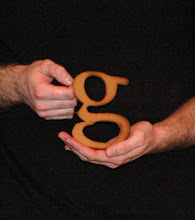But times are changing.
Last night, my intrepid co-adventurers and myself encountered an abnormally high concentration of post-worthy papyrocity in the Seattle and Edmonds areas. It is too early to say whether this is an isolated instance or an indication of a greater trend, so please go about your daily lives as you normally would and trust that this fearless flatfoot (and my esteemed colleagues) will bring you the truth as it happens.
But enough paranoid rambling. On to the specimens.
 Exhibit A: Typical instance of storefront papyrus. It wants to say, "I have been many places and seen many things," but really only says "I may have been many places, but no matter where I go I still eat Pizza Hut." I'm sure there is plenty of Chinese and Pakistani fabric in this store.
Exhibit A: Typical instance of storefront papyrus. It wants to say, "I have been many places and seen many things," but really only says "I may have been many places, but no matter where I go I still eat Pizza Hut." I'm sure there is plenty of Chinese and Pakistani fabric in this store.Papyrocity Level: Earthy
 Exhibit B: Same storefront, secondary instance. Note the use of textured background- this display has been thoroughly planned, yet still papyrus prevails. Very worrisome indeed.
Exhibit B: Same storefront, secondary instance. Note the use of textured background- this display has been thoroughly planned, yet still papyrus prevails. Very worrisome indeed.Papyrocity Level: Earthy+
 Exhibit C: This is the one that bothers me. In and of itself, it is trivial, and so I thought– at first. I wasn't even particularly peeved by its careless home-printed, word processor layout, not to mention its presence in an otherwise well-decorated place of refreshment (though it was hard for anything to bother me more than the Big Stinky of ALL cheesy cover bands that was playing there). However, it wasn't long before I noticed three other specimens exactly like this one.
Exhibit C: This is the one that bothers me. In and of itself, it is trivial, and so I thought– at first. I wasn't even particularly peeved by its careless home-printed, word processor layout, not to mention its presence in an otherwise well-decorated place of refreshment (though it was hard for anything to bother me more than the Big Stinky of ALL cheesy cover bands that was playing there). However, it wasn't long before I noticed three other specimens exactly like this one.This new evidence suggests that papyrus may have developed the ability to breed asexually. In response, I have developed an additional rating system: the Papyrus Pandemic Potential Factor, or "fP3," which will quantify the specimen's reproductive capacity (details to come). The specimen shown here is a drone, a low-level worker with little to no reproductive capacity. Though relatively harmless, the drones may lead to a Queen, so keep a ready eye out for areas with high drone concentration.
This ends today's transmission. More information will be posted as it is found.
Your ever vigilant,
D


this is hilarious and fantastic. ima fan.
ReplyDeletesexy new layout!
ReplyDelete